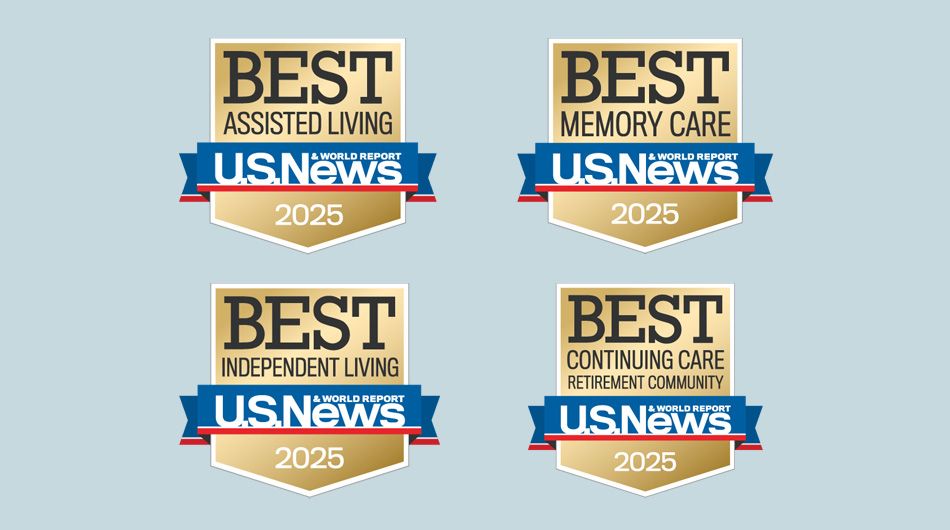What may be arguably as important as continuing to get new staff in the door is ensuring that you will be able to retain the staff already in the building. There comes a point when the desire to do a good job doesn’t make up for the lack of resources and support—here’s what you can do to retain satisfied long-term staff.
In April, President Biden signed an executive order affecting the post-acute care space. One action within the order calls to enhance job quality for long-term care workers. This order directs the department of Health and Human Services to consider regulations and guidelines to improve the quality of home care jobs, and to continue looking toward minimum staffing standards for post-acute nursing facilities. As part of the order, a portion of Medicare payments could be reliant on how well these facilities retain staff.
The Centers for Medicare and Medicaid Services (CMS) had said it would propose the minimum staffing mandate as part of its Skilled Nursing Facility (SNF) Prospective Payment System for fiscal year 2024 in a rule-making calendar published in the Federal Register.
According to the American Health Care Association (AHCA), the post-acute nursing facilities workforce “would not return to pre-pandemic levels until 2027” at the current pace. AHCA cites a report from CliftonLarsonAllen LLP stating that the total industry cost to meet a minimum staffing mandate is estimated to be up to $11.3 billion. In addition to the cost of meeting the mandate, the SNF industry would need to hire over 190,000 care professionals and nurses.
What may be arguably as important as continuing to get new staff in the door is ensuring that you will be able to retain the staff already in the building. The current workforce of your organization is most likely collectively tired. They have been showing up and doing the best job they can. Lack of staff in the building leads to larger workloads for each care professional. There comes a point when the desire to do a good job doesn’t make up for the lack of resources and support. These dedicated care professionals then start to experience burnout.
Battling Burnout Among Post-Acute Care Professionals
Think of the most valuable care professionals in your workplace right now. They have so much empathy and compassion for the clients your organization serves. You have seen them make connections with their clients that have lasted years. They take the time to get to know the clients, their loved ones, their routines, and their preferences. These care professionals see the person in front of them, not just the tasks they need to complete.
Sometimes care professionals see their clients and residents more than their own family members. We all become attached to our clients, and hopefully we are all fulfilled working to care for clients in the post-acute industry. Having a personal connection to the work that you do matters. Being able to put your best self into your work is important. But there is a problem. The problem is that these care professionals are being spread thin across client cases and resident assignments. There is no longer time to form those important bonds with residents and deliver true person-centered care. Even though they love their clients, enjoy their job, and have a calling to care for others, care professionals are still leaving the post-acute workforce.
Brenda’s Story
All of the media attention given to the new plan to focus on the SNF workforce makes me think of Brenda. Brenda was one of those talented Certified Nursing Assistants (CNA) who worked in a SNF, loved her job and her clients. But she left.
Brenda used to start her morning by getting the dining room ready for the clients who would need assistance feeding themselves. This task wasn’t really her job, but she did it to help her coworkers ensure that the residents could get breakfast on time. Between setting the tables, she would also be running the blender. She had collaborated with the Dietician to make tasty, calorie-dense smoothies and milkshakes for the people who didn’t really have an appetite for food but who loved to drink. She went the extra mile to make sure these clients were getting the intake they needed in a delicious way.
She would make her way to the floor after the dining room was set. Any one of her coworkers were happy to see Brenda coming down the hall in the morning because they knew she was there to help. She was the Restorative CNA for the building, working with the rehabilitation department to ensure clients continued to maintain their function and strength.
Brenda didn’t have a set group of clients daily. She felt like she had a responsibility for every single client in the facility. She would help any client get dressed, assist a coworker use a mechanical lift for transfers, and give someone a luxurious whirlpool bath to start their morning out right. She wanted to make every day a great day for everyone in the facility.
Her day continued, and she would be seen ambulating clients in the hallway, collaborating with staff to ensure that care plans were being followed for exercise, and assisting residents get from point A to point B within the large building they called their home. If you were looking for Brenda, all you needed to do was listen. She would be having an enthusiastic conversation with a client and their family to make them feel special. She would laugh with a client while they walked to help distract them from the pain they were experiencing. She would be encouraging a coworker who was having a difficult shift and offer to help. Brenda was always easy to find. She artfully layered empathy and compassion into each interaction she had with clients. She educated and encouraged her coworkers. She worked hard while creating connections. She was truly an asset.
Brenda may have been the most valuable person on that staff at the time, but she left. She was emotionally exhausted by situations that occur in long-term care. There wasn’t enough support, communication, or resources for her to do her job in the way she felt it should be done to continue to improve client outcomes.
Are Your Best Care Professionals at Risk of Burnout or Leaving?
Think about the care professionals, like Brenda, who are assets to your organization. They help inspire and orient new staff who come through your doors, they build relationships with clients and their loved ones, and they not only meet the expectations of their role; they exceed them.
Now, think about the reasons they might be considering leaving your employment. They are integral parts of the care team and are highly respected among their coworkers. The client population your organization serves is near and dear to these employees’ hearts.
When you have employees that truly love what they do and genuinely care for the clients, it may appear on the surface as if they would never consider making a career change. But beneath the surface, they may be struggling with various aspects of their job (like Brenda) and be closer to leaving than you think.
What are you doing to prevent burnout and ensure these top care professionals continue to choose your company as their place of employment? If you have a worker like Brenda, how do you retain her?
How to RETAIN Your Brendas
Use the RETAIN method to increase retention of new and experienced staff:

Brenda was one of those care professionals who seemed as if she were made for the job. However, after 18 years as a CNA she left the healthcare setting. Does she regret leaving healthcare? Yes, at times, but no one knew what to do to retain her. How do I know? Because she is my mom. I worked in the same skilled nursing facility as her. I started out in the dietary department while I worked on getting my nursing license.
Later, when I was a charge nurse throughout the facility, I worked with care professionals and other nurses who were putting in hard work. I wanted to make sure that they always felt valued and knew they were worth retaining. I watched my mom, Brenda, throughout the years as she made a positive impact on the residents and staff, but I also watched her leave. I used her as my guiding example of how to remain engaged and retain the staff that I supervised.
Take the Initiative
Use the RETAIN tips to help show your employees how much you value them and want them to continue to be a part of your team. When there might be difficult terrain up ahead, such as changes coming down the line from CMS regarding staffing, let your employees know and assure them that you will be there, with and for them, throughout the process.
Next Steps:
Related Posts












